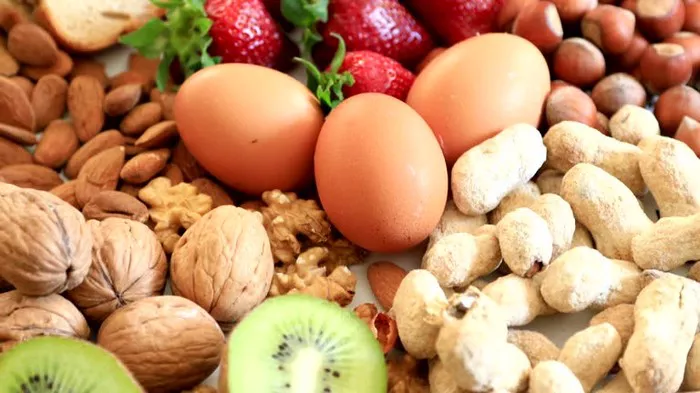Eggs are a culinary staple in both sweet and savory dishes, serving a variety of functions—binding, leavening, thickening, and emulsifying. However, whether due to dietary restrictions, allergies, ethical reasons, or simply running out of eggs, many people find themselves needing an effective alternative.
The good news? There are several egg substitutes that can work just as well, depending on your cooking or baking needs. This guide outlines 11 proven alternatives to eggs, explaining how they work and when to use them.
Why Substitute Eggs?
Before diving into the substitutes, it’s helpful to understand why someone might avoid eggs.
Dietary Restrictions
Vegan diets avoid all animal products, including eggs.
Allergies to eggs are common, especially in children.
Religious or cultural dietary laws may prohibit egg consumption.
Health Concerns
Some individuals monitor or limit egg intake due to concerns about cholesterol or saturated fat, even though eggs are nutrient-dense.
Sustainability and Ethics
Those concerned about animal welfare or environmental sustainability may choose plant-based egg replacements.
1. Flaxseed Meal
How It Works
Flaxseed becomes gelatinous when mixed with water, mimicking the binding quality of eggs in baked goods.
How to Use
- 1 tablespoon ground flaxseed + 3 tablespoons water = 1 egg
- Let sit for 5–10 minutes to thicken before use.
Best For
Cookies, muffins, pancakes, and quick breads.
2. Chia Seeds
How It Works
Chia seeds, like flaxseeds, form a gel when soaked in water, helping bind ingredients.
How to Use
- 1 tablespoon chia seeds + 3 tablespoons water = 1 egg
- Soak for 10–15 minutes until a gel-like consistency forms.
Best For
Dense baked goods like brownies, granola bars, and cakes.
3. Unsweetened Applesauce
How It Works
Applesauce adds moisture and a touch of natural sweetness while helping bind ingredients.
How to Use
- 1/4 cup applesauce = 1 egg
Best For
Cakes, muffins, and sweet breads. Use in recipes where a mild fruit flavor complements the dish.
4. Mashed Banana
How It Works
Banana provides moisture and binding power, though it does add flavor.
How to Use
- 1/4 cup mashed banana = 1 egg
Best For
Pancakes, muffins, and desserts with banana-friendly profiles.
5. Commercial Egg Replacers
How It Works
These are typically made from starches and leavening agents to mimic eggs in both texture and function.
How to Use
- Follow the package instructions (usually 1.5 teaspoons powder + 2–3 tablespoons water = 1 egg)
Best For
All-purpose baking, especially when precision is important (e.g., cookies, cakes, breads).
Popular Brands
- Bob’s Red Mill Egg Replacer
- Ener-G Egg Replacer
- JUST Egg (liquid format, best for scrambled eggs)
6. Silken Tofu
How It Works
Blended silken tofu has a creamy texture and neutral flavor that adds moisture and density.
How to Use
- 1/4 cup blended silken tofu = 1 egg
Best For
Brownies, cheesecakes, and savory bakes like quiches or casseroles.
7. Yogurt or Buttermilk
How It Works
The acidity in yogurt and buttermilk can help baked goods rise, and both add moisture.
How to Use
- 1/4 cup yogurt or buttermilk = 1 egg
Best For
Cakes, muffins, and breads. Ideal for recipes that benefit from a slight tang.
8. Aquafaba
How It Works
Aquafaba is the liquid from canned chickpeas. Its protein structure allows it to mimic egg whites, including forming peaks when whipped.
How to Use
- 3 tablespoons aquafaba = 1 whole egg
- 2 tablespoons aquafaba = 1 egg white
Best For
Meringues, macarons, mousses, and light cakes.
9. Vinegar and Baking Soda
How It Works
The reaction between baking soda and vinegar creates carbon dioxide, acting as a leavening agent.
How to Use
- 1 tablespoon vinegar (white or apple cider) + 1 teaspoon baking soda = 1 egg
Best For
Light cakes, cupcakes, and quick breads.
10. Nut Butters
How It Works
Nut butters add moisture and a bit of fat, helping to bind ingredients.
How to Use
- 3 tablespoons peanut, almond, or cashew butter = 1 egg
Best For
Cookies, brownies, and energy bars. Be aware of the strong nut flavor.
11. Arrowroot Powder
How It Works
Arrowroot is a starch that acts as a thickening and binding agent.
How to Use
- 2 tablespoons arrowroot powder + 3 tablespoons water = 1 egg
Best For
Pies, puddings, and custards.
Choosing the Right Substitute
The best egg substitute depends on the purpose the egg serves in your recipe:
| Function of Egg | Best Substitutes |
|---|---|
| Binding | Flaxseed, chia seed, banana |
| Moisture | Applesauce, yogurt, silken tofu |
| Leavening | Vinegar + baking soda, aquafaba |
| Emulsifying | Nut butter, commercial replacers |
| Whipping/Volume | Aquafaba |
Tips for Success
- Test in small batches: Some substitutes change the flavor or texture. Try a test bake before making a full recipe.
- Use fresh ingredients: Make sure your flaxseed, baking soda, or aquafaba is fresh for optimal results.
- Adjust liquids: Moisture content may vary, so you might need to slightly reduce or increase liquids.
Final Thoughts
Eggs are versatile, but so are the many plant-based and allergen-free alternatives available today. Whether you’re baking cupcakes, whipping up pancakes, or cooking a savory dish, there’s an egg substitute to match every culinary need.
With the right knowledge and a little experimentation, you can achieve delicious, fluffy, and satisfying results—no eggs required.
You Might Be Interested In:

